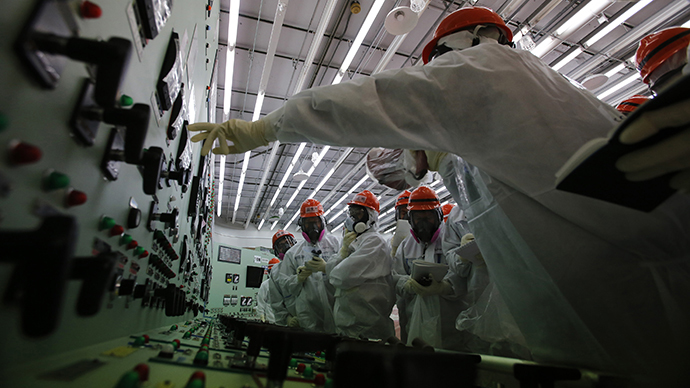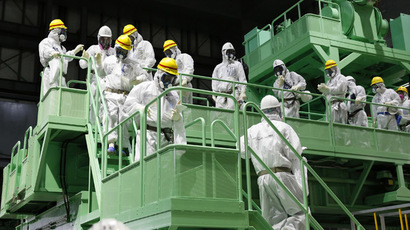TEPCO fails to restart Fukushima water decontamination process

The water decontamination process at the crippled Fukushima nuclear power plant has once again been halted, only about six hours after the plant’s operator TEPCO announced it was resuming the purification process following a previous failure.
Six days ago, Tokyo Electric Power Co. (TEPCO) detected a failure in what is known as the Advanced Liquid Processing System (ALPS). The company said that up to 900 tons of water, which had not been sufficiently cleaned in the ALPS equipment, flowed into a network of 21 tanks that were holding 15,000 tons of treated water. Not only have the 21 tanks been rendered unusable, but all 15,000 tons of previously cleaned water has to be retreated.
TEPCO said it restarted two of three lines used to clean toxic water at around 04:00 GMT on Monday. A third line remained offline while crews examined a filter defect, AFP reported.
Yet shortly before 10:00 GMT, TEPCO suspended the ALPS of the two units after finding about a half liter of leaked water at a tank designed to measure levels of radioactive materials in the processed water, according to Jiji Press. TEPCO said in a press release that there were no new leaks outside the system, though.
The difficulties only mark the latest challenges TEPCO has faced since March 2011, when a 9.0 megathrust earthquake triggered a subsequent tsunami that resulted in a badly-damaged Fukushima Daiichi nuclear power plant.
The ALPS system was developed to dramatically curb the radiation level of highly contaminated water that is accumulating at the plant. The ALPS consists of 14 steel cylinders through which the contaminated water is filtered. After the filtering, waste materials like the absorbent and remaining sludge are transferred to high-integrity containers (HICs) that are transported to a temporary storage facility.
The ALPS can remove 62 different types of radionuclides, including strontium and cobalt, from contaminated water. While the system cannot remove tritium – a radioactive isotope of hydrogen – the purification of water through the system is expected to reduce damage levels if water leaks from storage tanks.
The equipment, which is supposed to be able to treat up to 750 tons of contaminated water a day, has been undergoing trial runs since March 2013. The system, however, has been plagued with problems from the outset. The latest glitch and subsequent recontamination was caused when one of the three ALPS lines failed to remove radioactive substances to a sufficient level.
In mid-January, TEPCO warned that nuclear radiation at the boundaries of the damaged facility had jumped to eight times the government safety guidelines, while only a week into the new year, plant operators once again had to stop using its systems to decontaminate radioactive water. Compounding their problems at the time, a crane used to get rid of the container from the ALPS ceased functioning.
TEPCO has struggled to manage a growing volume of contaminated water at the plant. About 436,000 cubic meters of contaminated water is stored at the site in about 1,200 tanks.














